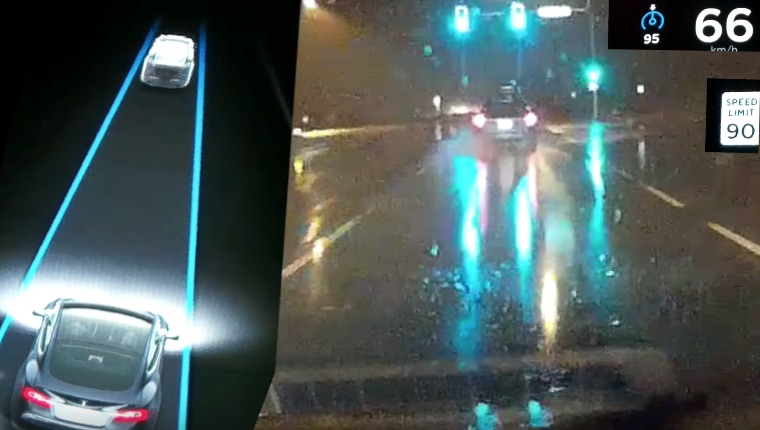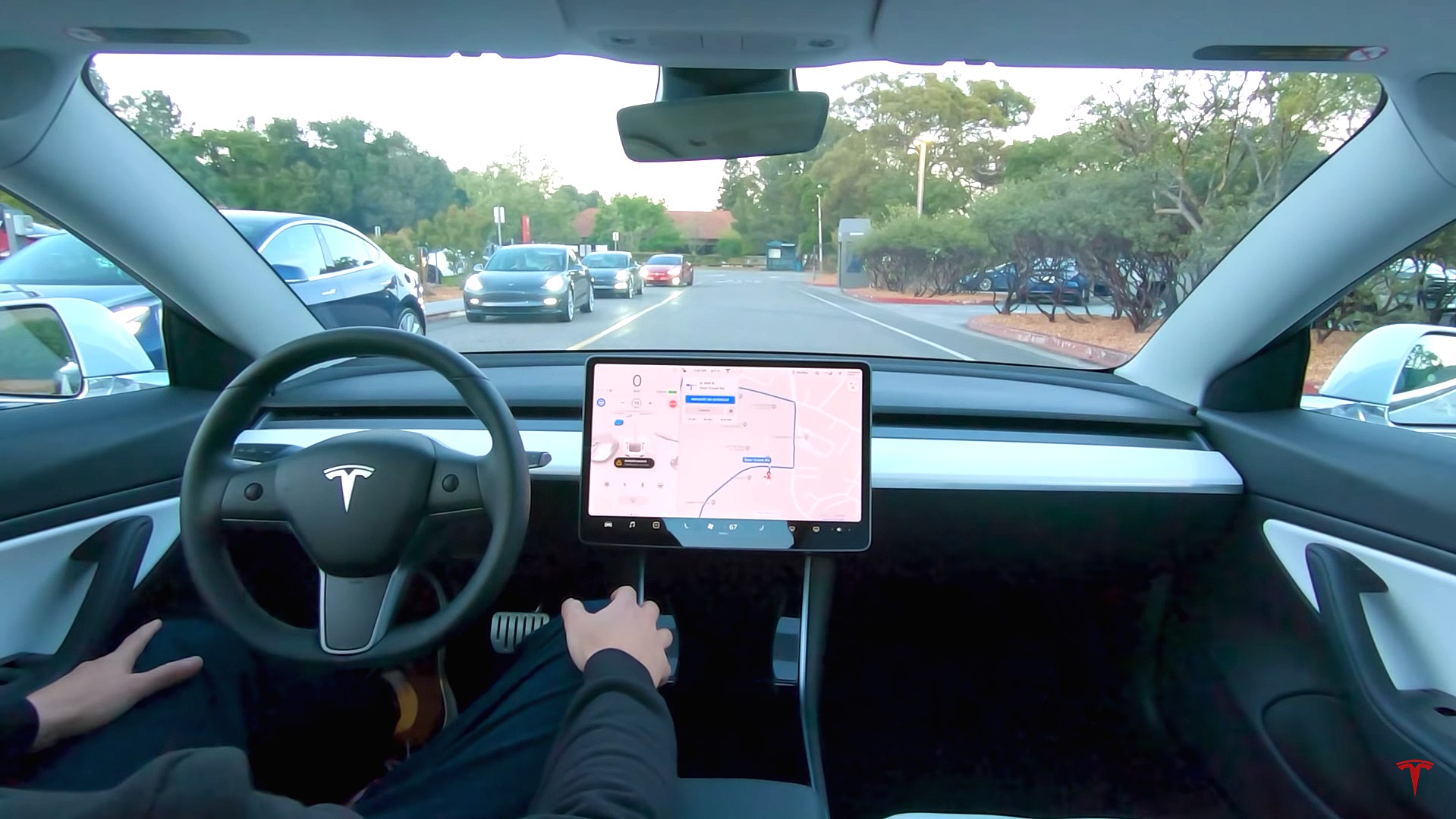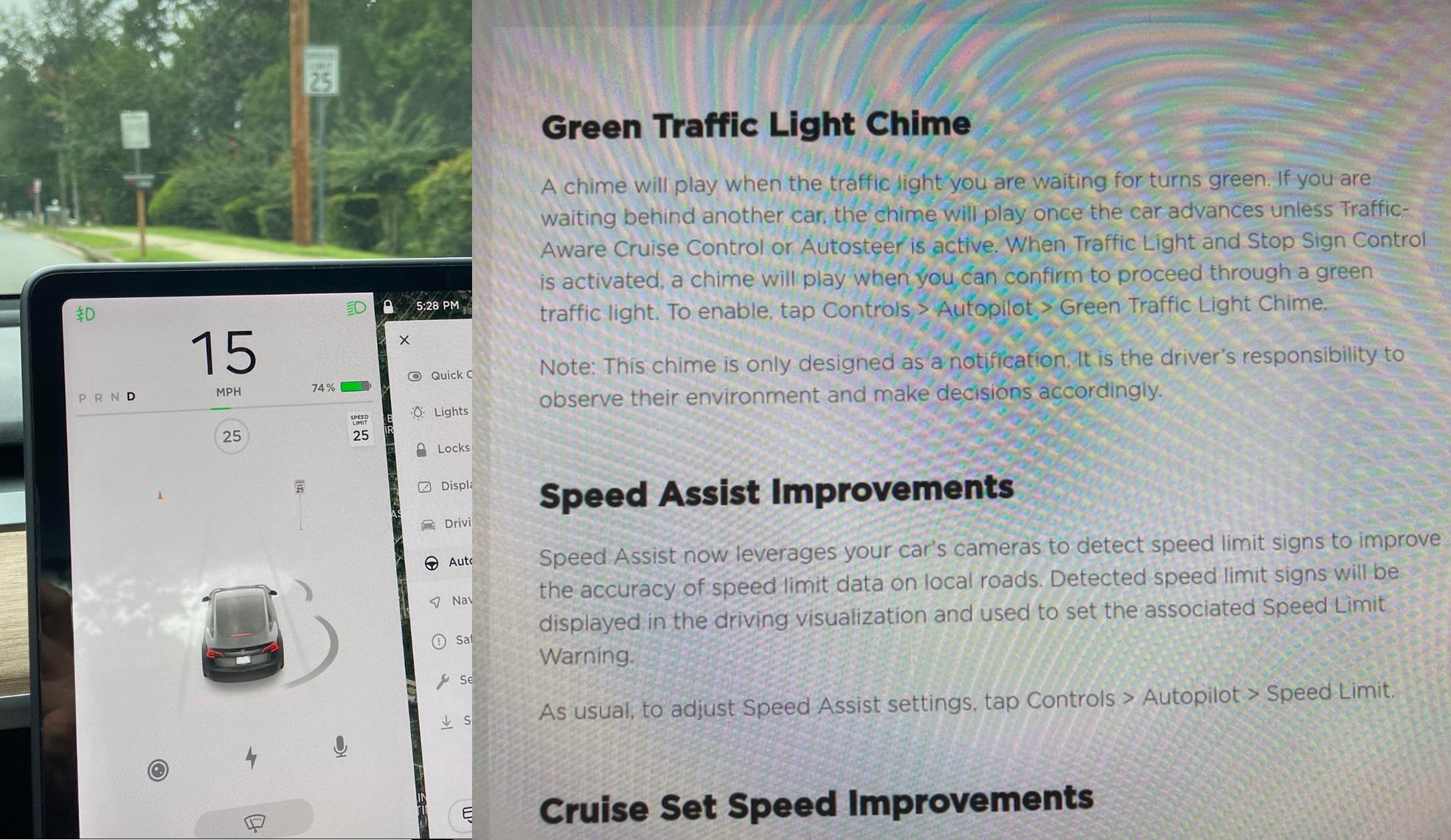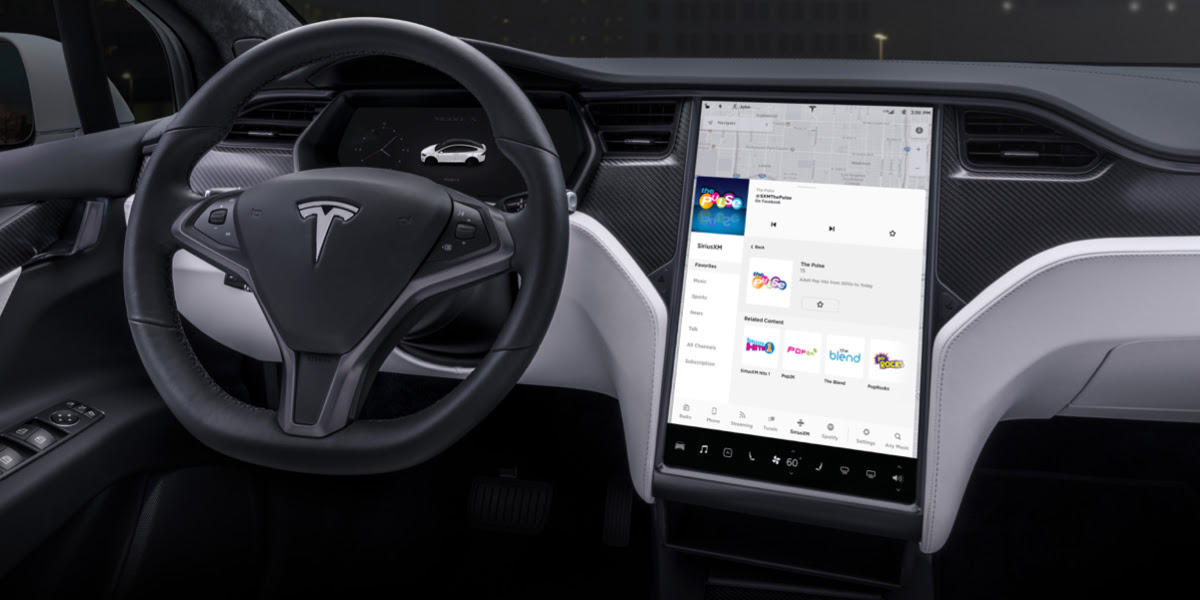Firmware
Tesla Autopilot Delivering Safety in Bad Weather

Experienced drivers will not be surprised by the Department of Transport finding that 22% of crashes and 16% of fatalities happen in bad weather. Some may suspect the dangers are ice and snow, but it is rain and wet pavement that account for the great majority of weather-related accidents.
In heavy rain, especially at night, our sense of the road is significantly degraded. Bright lights reflecting off the shiny black road make lane-markings difficult to distinguish. Powerful windshield wipers struggle to keep up with pounding rain. Passing vehicles unexpectedly throw dense bunches of water onto the windscreen, blinding us temporarily at the very moments we need our undivided attention on the road.
It can be surprising to watch Autopilot perform in such difficult weather. In good daytime weather, our critical eye may judge the automated system as performing only about on a par with our own confident driving abilities. However, in nighttime rainstorms, when our perceptive abilities and responses may be uncomfortably taxed to their limits, Autopilot seems more certain. Although Autopilot’s detection systems are similarly challenged, to a degree, it is at the times when things get most difficult for us that we begin to see in Autopilot a potentially life-saving ally.
In this video you can see representations of Autopilot’s sensors on the Tesla display screen as it switches rapidly among its sensing tools. The camera, radar and ultrasonic inputs to Autopilot’s software are displayed in real time. Autopilot’s primary focus is on detecting lane-markings, which glow blue on the dash screen. Often, one or the other of the two markings disappear as they become undetectable to the camera. As one disappears, the other often becomes detectable again. This goes on, switching back and forth; one is visible, then the other, then both. But sometimes they are both gone at the same time. When this happens, on the screen the vehicle ahead turns from its camera registered grey to the radar-tracked blue. Remarkably, when operating on radar alone, and even while traversing long curves, the Tesla remains safely in its lane.
All the while, ultrasonic sensors register adjacent vehicles and roadway infrastructure, indicated onscreen as waves of graduated, color-coded light; safe, informative white, cautious orange and sometimes, dangerous red. The Autopilot screen flickers its rapid switching among its detection tools, faster than the eye can absorb, as the Tesla ploughs through the rain and keeps comfortably in its lane.
The video shows Autopilot performing in a variety of situations,. The most surprising sequence is shown at the end when there is no vehicle ahead, and all other detection indications are absent; no blue glow of the lane-markings and of course no forward vehicle in the urgently needed radar-tracked blue. While Autopilot is apparently receiving no road orientation guidance, the Tesla inexplicably remains centered in its lane, following the curve of the darkened road.
My hands were on the wheel, ready to take control at all times during this 90 minute journey, (only three minutes shown in the video). I corrected Autopilot twice, once when it appeared to be following a car that was changing lanes, and once when it indicated a truck (represented momentarily as a car), as being off the road to the right when it wasn’t. That time, at 2:15 in the video, my correction is shown, which may or may not have been necessary, but probably was.
At this stage in its development, supervising Autopilot takes perhaps even more attention than when a person is driving the car himself. Even so, the combination of Autopilot’s near flawless performance and my oversight certainly made this a safe drive. When Autopilot becomes fully autonomous, difficult driving conditions will be much safer than what accident statistics tell us they are today.
More from ‘Tesla Autopilot Safety’

Firmware
Tesla mobile app shows signs of upcoming FSD subscriptions

It appears that Tesla may be preparing to roll out some subscription-based services soon. Based on the observations of a Wales-based Model 3 owner who performed some reverse-engineering on the Tesla mobile app, it seems that the electric car maker has added a new “Subscribe” option beside the “Buy” option within the “Upgrades” tab, at least behind the scenes.
A screenshot of the new option was posted in the r/TeslaMotors subreddit, and while the Tesla owner in question, u/Callump01, admitted that the screenshot looks like something that could be easily fabricated, he did submit proof of his reverse-engineering to the community’s moderators. The moderators of the r/TeslaMotors subreddit confirmed the legitimacy of the Model 3 owner’s work, further suggesting that subscription options may indeed be coming to Tesla owners soon.
Did some reverse engineering on the app and Tesla looks to be preparing for subscriptions? from r/teslamotors
Tesla’s Full Self-Driving suite has been heavily speculated to be offered as a subscription option, similar to the company’s Premium Connectivity feature. And back in April, noted Tesla hacker @greentheonly stated that the company’s vehicles already had the source codes for a pay-as-you-go subscription model. The Tesla hacker suggested then that Tesla would likely release such a feature by the end of the year — something that Elon Musk also suggested in the first-quarter earnings call. “I think we will offer Full Self-Driving as a subscription service, but it will be probably towards the end of this year,” Musk stated.
While the signs for an upcoming FSD subscription option seem to be getting more and more prominent as the year approaches its final quarter, the details for such a feature are still quite slim. Pricing for FSD subscriptions, for example, have not been teased by Elon Musk yet, though he has stated on Twitter that purchasing the suite upfront would be more worth it in the long term. References to the feature in the vehicles’ source code, and now in the Tesla mobile app, also listed no references to pricing.
The idea of FSD subscriptions could prove quite popular among electric car owners, especially since it would allow budget-conscious customers to make the most out of the company’s driver-assist and self-driving systems without committing to the features’ full price. The current price of the Full Self-Driving suite is no joke, after all, being listed at $8,000 on top of a vehicle’s cost. By offering subscriptions to features like Navigate on Autopilot with automatic lane changes, owners could gain access to advanced functions only as they are needed.
Elon Musk, for his part, has explained that ultimately, he still believes that purchasing the Full Self-Driving suite outright provides the most value to customers, as it is an investment that would pay off in the future. “I should say, it will still make sense to buy FSD as an option as in our view, buying FSD is an investment in the future. And we are confident that it is an investment that will pay off to the consumer – to the benefit of the consumer.” Musk said.
Firmware
Tesla rolls out speed limit sign recognition and green traffic light alert in new update

Tesla has started rolling out update 2020.36 this weekend, introducing a couple of notable new features for its vehicles. While there are only a few handful of vehicles that have reportedly received the update so far, 2020.36 makes it evident that the electric car maker has made some strides in its efforts to refine its driver-assist systems for inner-city driving.
Tesla is currently hard at work developing key features for its Full Self-Driving suite, which should allow vehicles to navigate through inner-city streets without driver input. Tesla’s FSD suite is still a work in progress, though the company has released the initial iterations of key features such Traffic Light and Stop Sign Control, which was introduced last April. Similar to the first release of Navigate on Autopilot, however, the capabilities of Traffic Light and Stop Sign Control were pretty basic during their initial rollout.
2020.36 Showing Speed Limit Signs in Visualization from r/teslamotors
With the release of update 2020.36, Tesla has rolled out some improvements that should allow its vehicles to handle traffic lights better. What’s more, the update also includes a particularly useful feature that enables better recognition of speed limit signs, which should make Autopilot’s speed adjustments better during use. Following are the Release Notes for these two new features.
Green Traffic Light Chime
“A chime will play when the traffic light you are waiting for turns green. If you are waiting behind another car, the chime will play once the car advances unless Traffic-Aware Cruise Control or Autosteer is active. When Traffic Light and Stop Sign Control is activated, a chime will play when you can confirm to proceed through a green traffic light. To enable, tap Controls > Autopilot > Green Traffic Light Chime.
“Note: This chime is only designed as a notification. It is the driver’s responsibility to observe their environment and make decisions accordingly.”
Speed Assist Improvements
“Speed Assist now leverages your car’s cameras to detect speed limit signs to improve the accuracy of speed limit data on local roads. Detected speed limit signs will be displayed in the driving visualization and used to set the associated Speed Limit Warning.
“As usual, to adjust Speed Assist settings, tap Controls > Autopilot > Speed Limit.”
Footage of the new green light chime in action via @NASA8500 on Twitter ✈️ from r/teslamotors
Amidst the rollout of 2020.36’s new features, speculations were abounding among Tesla community members that this update may include the first pieces of the company’s highly-anticipated Autopilot rewrite. Inasmuch as the idea is exciting, however, Tesla CEO Elon Musk has stated that this was not the case. While responding to a Tesla owner who asked if the Autopilot rewrite is in “shadow mode” in 2020.36, Musk responded “Not yet.”
Firmware
Tesla rolls out Sirius XM free three-month subscription

Tesla has rolled out a free three-month trial subscription to Sirius XM, in what appears to be the company’s latest push into making its vehicles’ entertainment systems more feature-rich. The new Sirius XM offer will likely be appreciated by owners of the company’s vehicles, especially considering that the service is among the most popular satellite radios in the country today.
Tesla announced its new offer in an email sent on Monday. An image that accompanied the communication also teased Tesla’s updated and optimized Sirius XM UI for its vehicles. Following is the email’s text.
“Beginning now, enjoy a free, All Access three-month trial subscription to Sirius XM, plus a completely new look and improved functionality. Our latest over-the-air software update includes significant improvements to overall Sirius XM navigation, organization, and search features, including access to more than 150 satellite channels.
“To access simply tap the Sirius XM app from the ‘Music’ section of your in-car center touchscreen—or enjoy your subscription online, on your phone, or at home on connected devices. If you can’t hear SiriusXM channels in your car, select the Sirius XM ‘Subscription’ tab for instruction on how to refresh your audio.”
Tesla has actually been working on Sirius XM improvements for some time now. Back in June, for example, Tesla rolled out its 2020.24.6.4 update, and it included some optimizations to its Model S and Model X’s Sirius XM interface. As noted by noted Tesla owner and hacker @greentheonly, the source code of this update revealed that the Sirius XM optimizations were also intended to be released to other areas such as Canada.
Interestingly enough, Sirius XM is a popular feature that has been exclusive to the Model S and X. Tesla’s most popular vehicle to date, the Model 3, is yet to receive the feature. One could only hope that Sirius XM integration to the Model 3 may eventually be included in the future. Such an update would most definitely be appreciated by the EV community, especially since some Model 3 owners have resorted to using their smartphones or third-party solutions to gain access to the satellite radio service.
The fact that Tesla seems to be pushing Sirius XM rather assertively to its customers seems to suggest that the company may be poised to roll out more entertainment-based apps in the coming months. Apps such as Sirius XM, Spotify, Netflix, and YouTube, may seem quite minor when compared to key functions like Autopilot, after all, but they do help round out the ownership experience of Tesla owners. In a way, Sirius XM does make sense for Tesla’s next-generation of vehicles, especially the Cybertruck and the Semi, both of which would likely be driven in areas that lack LTE connectivity.








